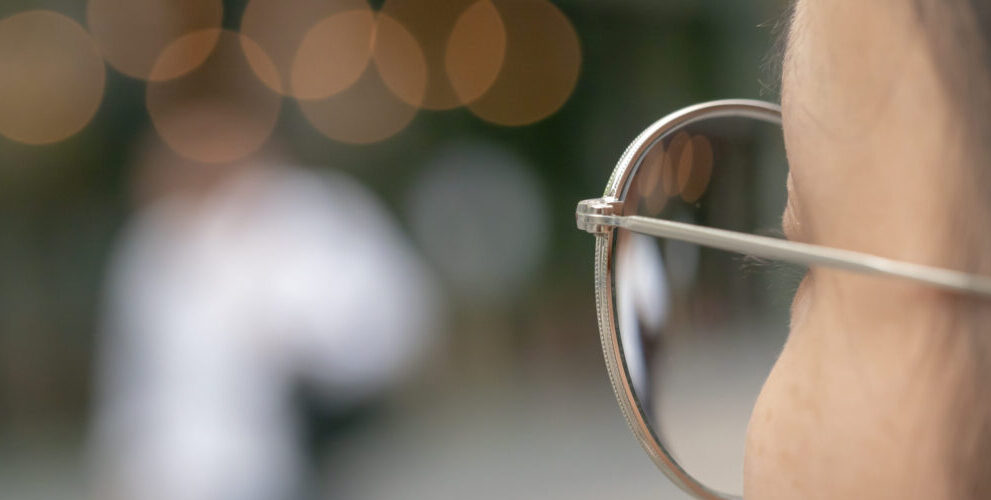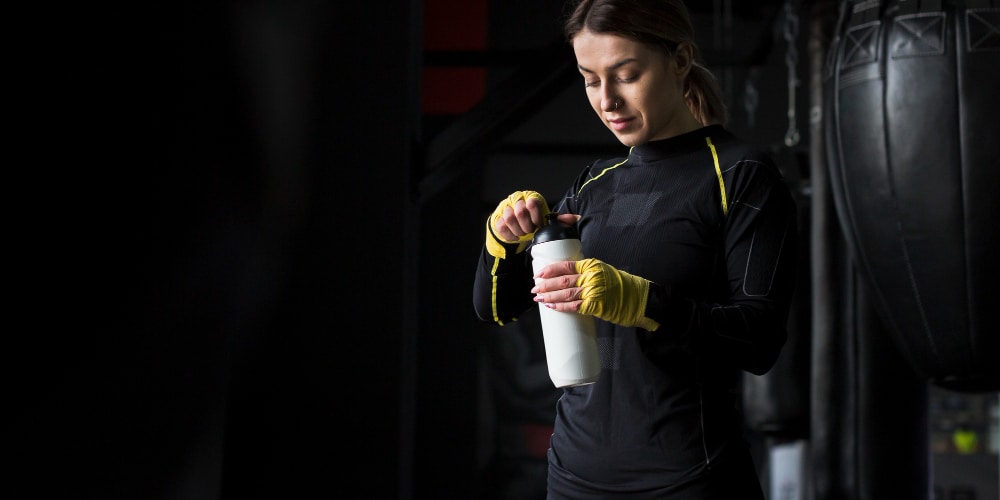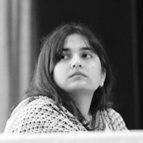Myopic CNVM: Journalist shares journey with condition that could potentially lead to irreversible vision loss
Myopic CNVM is a serious complication primarily affecting individuals with high myopia, defined as a refractive error of -6 diopters or more.
Author
Author
- admin / 6 months

- 0
- 6 min read

Author
In December 2024, Rituparna Chatterjee, a senior journalist and editor, noticed something alarming: straight lines appeared wavy, words looked distorted as if viewed through a thick glass bottle, and a gray patch clouded the center of her right eye’s vision.
Rushing to a doctor, she underwent a series of tests, only to receive a devastating diagnosis: choroidal neovascular membrane (CNVM), a serious and incurable retinal condition that can lead to significant vision loss.
Sharing her story on X, Chatterjee wrote, “I have thought about this and decided to share my battle (while I still can) with an incurable and rare eye condition that’s leading to considerable vision loss in one eye. It’s not just a warning to others to be vigilant, but since there is so little information, treatment options, and research out there…”
Health thread:
I have thought about this and decided to share my battle (while I still can) with an incurable and rare eye condition that’s leading to considerable vision loss in one eye. It’s not just a warning to others to be vigilant but since there is so little information
— Rituparna Chatterjee (@MasalaBai) April 28, 2025
“It’s [the condition] incurable and irreversible to an extent. There’s only one treatment option – intravitreal injection (I use Eyelea – 50k/injection). Loading dose is once every month for 3 months and then observation and further injection as needed,” she added.
First Check spoke to Dr Mayank Bansal, MD, Ophthalmology, All India Institute of Medical Sciences (AIIMS) Delhi, to understand more about myopic CNVM, its prevalence, treatment, and risk factors.
What is myopic CNVM?
Myopic CNVM is a serious complication primarily affecting individuals with high myopia, defined as a refractive error of -6 diopters or more.
Myopia or nearsightedness, is a common eye condition where distant objects appear blurry while objects close by are clear. Myopic CNVM is only associated with high myopia.
“In people with high myopia, the eyeball is stretched out, and therefore the retina, which is the back part of the eye, is thin,” said Dr Bansal.
He explained that this leads to the central area from where we see, which is called the macula, undergo degeneration or thinning. Because of this, new vessels grow from the choroid, the layer behind the retina. These new vessels are called choroidal neovascularization, and when they form a membrane, it’s called a choroidal neovascular membrane. These abnormal vessels leak fluid or blood, damaging the macula and causing symptoms like distorted vision, central grey patches, or blind spots.
“Left untreated, myopic CNVM can lead to scarring and macular atrophy, resulting in irreversible vision loss,” Dr Bansal added.
Increasing prevalence of myopia and risks of myopic CNVM
The global prevalence of myopia is predicted to increase from 27% of the world’s population in 2010 to 52% by 2050.
In India too, prevalence of myopia is rising due to increased screen time, urbanization, and limited outdoor activity. “The prevalence of myopia in 5 to 15‐year‐old urban children increased from 4.44% in 1999 to 21.15% in 2019. Our predictions, based on the slope of 0.8% every year (4.05% for every 5 years) indicate that the prevalence of myopia will increase to 31.89% in 2030, 40.01% in 2040 and 48.14% in 2050,” according to a study, which added that India could face a myopia epidemic in the coming decades—similar to East Asian countries—unless preventive measures and lifestyle changes are actively adopted.

With increased prevalence of Myopia, risk of CNVM also increases. Although high myopia is the main cause, Myopic CNVM can develop in people with any degree of myopia.
Myopic CNVM is not as prevalent as age-related macular degeneration (AMD) but is significant among high myopes. “It can be estimated that about 5 to 10% of people who have pathological myopia can develop a Myopic CNVM,” Dr. Bansal noted.
Myopic CNVM accounts for 60% of CNVM cases in patients under 50 years. In India, where screen time is surging, Myopic CNVM is a growing concern, particularly for young adults.
This could have far reaching consequences. A 2017 review in Ophthalmology highlights that 35% of patients may develop bilateral Myopic CNVM within eight years, underscoring its long-term impact.
Diagnosis and treatment of Myopic CNVM
Early diagnosis is critical, as delays can lead to permanent vision loss due to scarring, experts say. Diagnosing Myopic CNVM relies on advanced imaging to detect abnormal vessels and retinal damage.
“For diagnosis, we use a specialized scan called optical coherence tomography, or OCT,” said Dr Bansal.
“A more advanced version, OCT angiography, allows us to define the vessels growing over here. If there’s still doubt, we proceed with fundus fluorescein angiography (FFA) or, rarely, indocyanine green angiography (ICGA),” he said.
While the condition does not have a cure, there are treatments that can stop its progress and help alleviate symptoms. Dr Bansal explained that since eye drops do not reach the retina, a group of medications called anti-VEGF drugs are used as an intravitreal injection inside the eye to reduce the abnormal vessel growth or cause them to constrict, and reduce leakage.
Chatterjee, who uses Eylea, anti-VEGF injection, at ₹50,000 per injection, described the regimen: “Loading dose is once every month for 3 months and then observation and further injection as needed.”
“Very often, the eye responds to a single shot, but if the effect wears off, vessels may regrow, requiring additional injections,” Dr. Bansal explained.
While effective, the high cost and injection burden pose challenges.
Gender and myopic CNVM: Is there a link?
Chatterjee’s case prompted questions about whether women are more vulnerable. Some studies suggest a slightly higher prevalence in women, though this is not universally confirmed.
However, Dr Bansal clarified that he has not seen a strong gender bias based on available evidence. “In my practice, I haven’t seen women to be exceptionally more vulnerable to it as compared to men,” he said.










